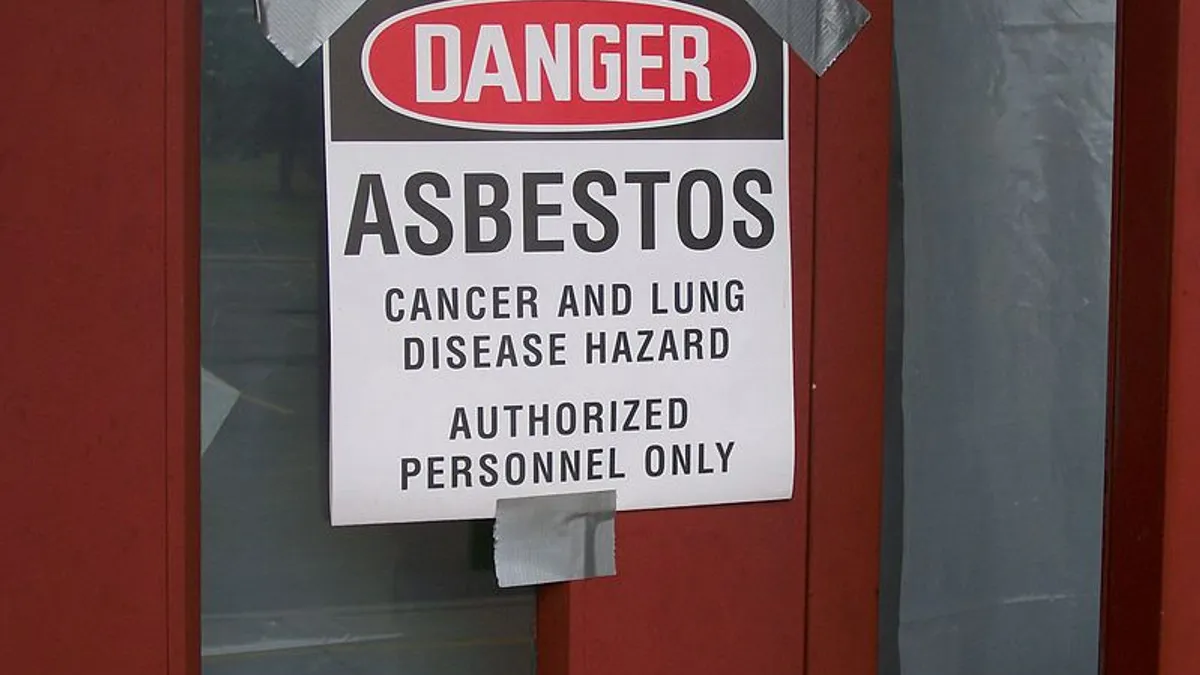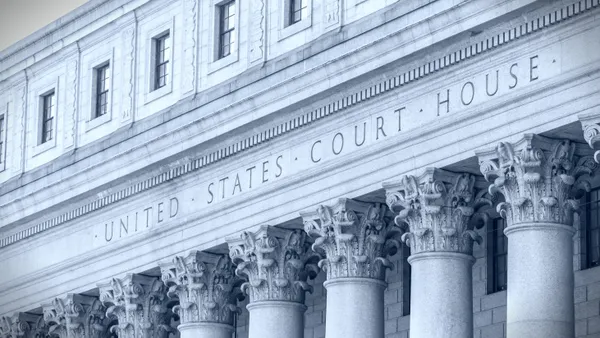Dive Brief:
- The Environmental Protection Agency has proposed a Significant New Use Rule (SNUR) that would allow the use of asbestos in certain building materials and other products on a case-by-case basis. The EPA is taking public comment on the rule through Aug. 10.
- The "significant new use" in the rule refers to manufacturing and other processes where asbestos is not currently in use — including but not limited to adhesives, sealants, roof and non-roof coatings; extruded sealant tape and other tape; high-grade electrical paper; millboard; pipeline wrap; reinforced plastics; roofing felt; asbestos floor tile and any other building material other than cement, according to the agency's notice in the Federal Register. The use is considered new if initiated after Aug. 25, 1989. If authorized, the new rule would allow manufacturers to include asbestos in these products if they give the EPA 90 days' notice prior to beginning the manufacturing process and pass an agency review. That review could include a determination as to whether the new use poses an unreasonable risk.
- Contrary to what some might believe, many materials and products made with asbestos are not forbidden in the U.S., even though the EPA acknowledges the material has been associated with lung cancer, mesothelioma and asbestosis. The agency did issue a rule in 1989 banning a number of asbestos-containing products, but an appeals court vacated that rule in 1991, overturning most of the ban, with the exception of corrugated paper, rollboard, commercial paper, specialty paper and flooring felt.
Dive Insight:
There seems to be a trend toward less EPA oversight of asbestos and other potentially toxic chemicals. In October, the agency decided to forego the congressionally mandated review of asbestos-containing material installed between 1970 and 2016, as well as that of flame retardants and other toxic substances in favor of a more limited examination of those products during the manufacturing process. Former EPA chief Scott Pruitt said the review ordered by Congress fell outside of the agency's original mandate, but critics accused the Trump administration of trying to placate the chemical industry.
President Donald Trump's administration has also leaned toward bypassing environmental regulations when it comes to work on the border wall between the U.S. and Mexico. The Department of Homeland Security published a notice at the beginning of the year stating its intent to waive several historic preservation and environmental laws like the Clean Air Act in order to speed up a section of wall construction at the Santa Teresa border crossing in New Mexico. The DHS claimed there was an immediate need for a planned vehicle barrier replacement and bollard wall as the area saw high levels of illegal entry, some of it associated with drug trafficking.













